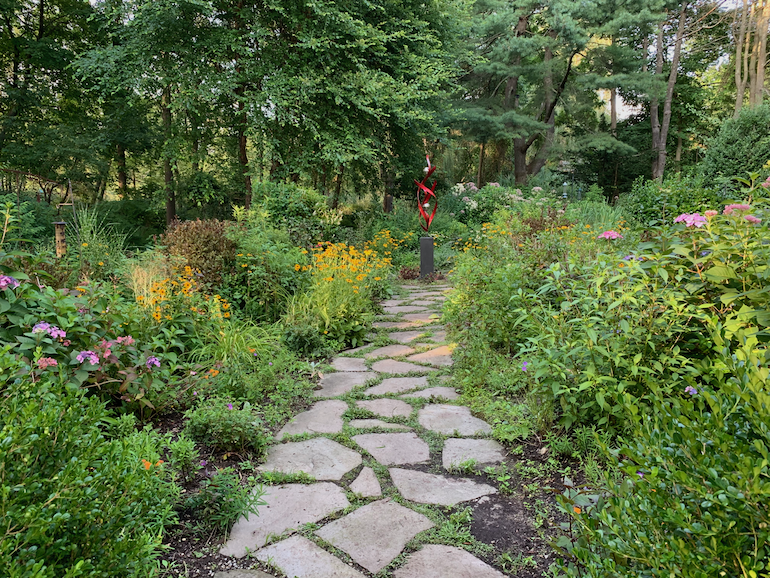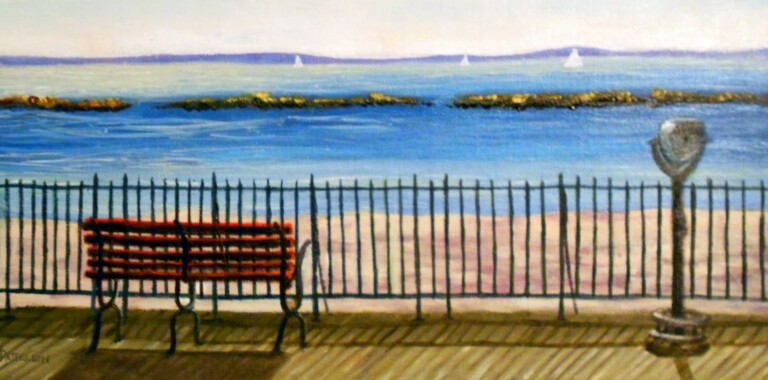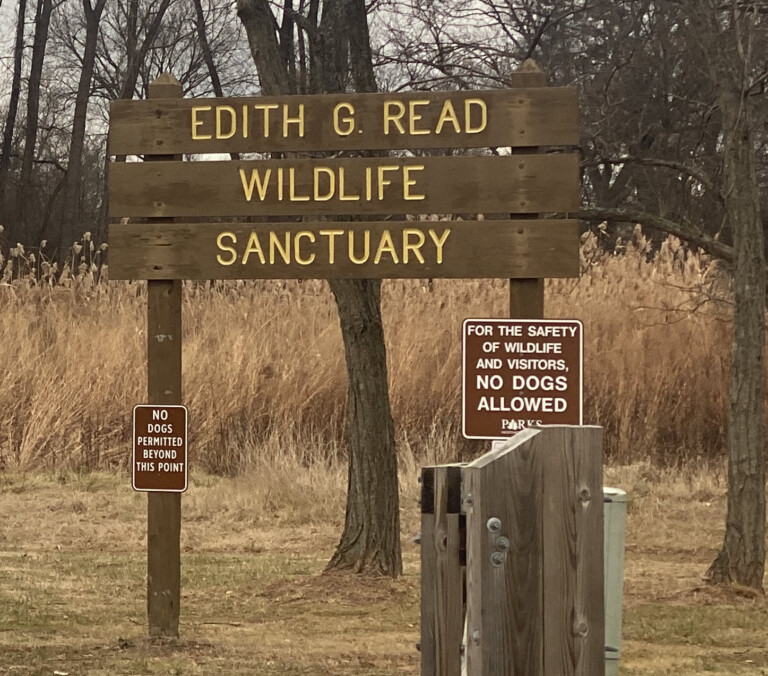Healthy Yard Tour Showcases Three Rye Properties

This coming Sunday, July 24th is the third annual Healthy Yards/Healthy Garden Tour in Westchester County. Three of the 60 properties being showcased across the County are in Rye.
This free tour will showcase gardens that utilize earth-friendly, healthy landscaping practices and is designed to raise awareness about how homeowners can protect pollinators and enhance the environment. Earth-friendly gardens provide native habitat for pollinators, clean the water and air, and sequester carbon in contrast to the landscaping practices commonly used that feature large lawns, non-native plantings and frequent applications of chemicals.
The Rye properties on the tour are:
Jay Archer‘s The Secret Garden of Celestial Happiness
330 Park Avenue, Rye, NY
Open 10am-1pm.
Tour this immersion garden through 4 zones.: Zone 1: Eco-Hybrid Front Landscape, mostly native plants mixed with traditional non-natives that attract pollinators; Zone 2: ReWilding Zone – evolved as a combination of plants that occur naturally from the adjacent wetlands, coupled with a design and planting composition; Zone 3: Transitional Zone – buffer between adjacent disturbed wetland and the designed landscape, a glimpse of the future; Zone 4: Disturbed Wetland – previously an aquatic restoration project by Westchester County. Rubber boots recommended to tour Zone 4.
Marsh Life
80 Stuyvesant Avenue, Rye, NY
Open 10am-1pm.
On Peningo Neck, pollinators enjoy a healthy garden with no pesticides or fertilizers that would destroy the crabs and delicate biome of the saltwater marshlands. Seaweed and leaf mulch promote plant health. The garden is let go in the winter months with no leaf collection or trimming back of flower beds until late spring so that insects may overwinter with coverage. The lawn demonstrates varied plant species.
Blind Brook Lodge Garden Haven
75 Milton Road, Rye, NY
Open 10am-1pm. (Park on Milton and walk in at the end of the parking lot.) Managed by a team of dedicated gardeners, this community garden behind the Lodge’s permit parking area combines vegetable gardening with beautiful pollinator plantings and four composting stations. The spot is an attractive gathering place for apartment owners and their families, with picnic tables and conversation areas.
What are earth-friendly landscaping practices? No pesticides (unless addressing a specific issue), use of native plants, smaller lawns, composting, mulch mowing on lawns, rewilding, meadowscapes and more.
Included in the 60 properties are gardens of all sizes and gardening conditions, from less than one quarter acre to large properties with sweeping meadows. They offer a range of suggestions as to how to participate in this growing movement: from planting one tree to ripping up an entire lawn.
“The gardens illustrate what we can do when we stop using landscaping practices like maintaining large lawns, installing non-native species, and using leaf blowers and pesticides and herbicides,” says Healthy Yards’ Filippine Hoogland. “The gardens on the tour are not necessarily ‘showcase’ gardens, although some of them are very pretty, but they all support nature in a way that can help insects, birds and other wildlife.”
Environmental organizations estimate that the United States has lost more than 60% of its insect population and 30% of its birds since 1970, mostly as a result of habitat loss. “Our home gardens can be critical in the recovery of the insect and bird populations if we all just make a few simple landscaping changes,” says Hoogland.
An interactive map provides the location of the gardens and their descriptions. This will continue to be updated until the day of the tour.
The garden tour is part of a much bigger national movement that finds its origin in Rachel Carson (author of Silent Spring in 1962) and, today, Doug Tallamy, an entomologist who has been instrumental in drawing attention to the growing problem of habitat loss and consequent decline in insect populations.
The large number of participating properties is designed so that people don’t have to travel far from their own neighborhoods to visit a garden. “We hope that people will just take a look at the interactive map, see what is local to them, and spend a few hours seeing their neighbors’ gardens,” says de Hoogland.
With some exceptions, gardens roughly south of I-287 will be open 10 am – 1 p.m. and those roughly north of I-287 are open from 1 – 4 p.m.






